#lezgians
Explore tagged Tumblr posts
Text
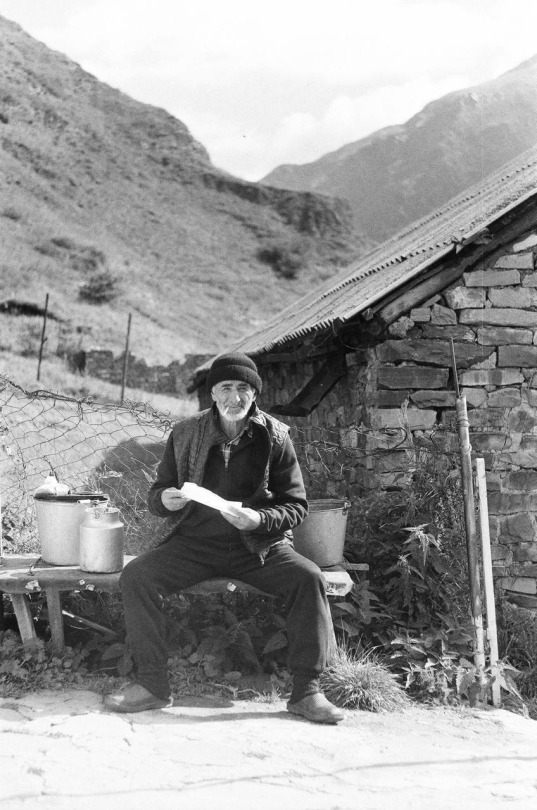

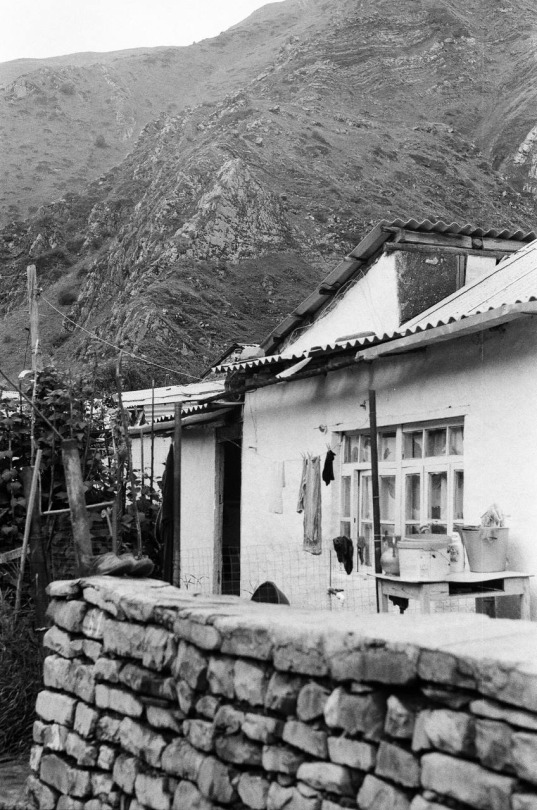

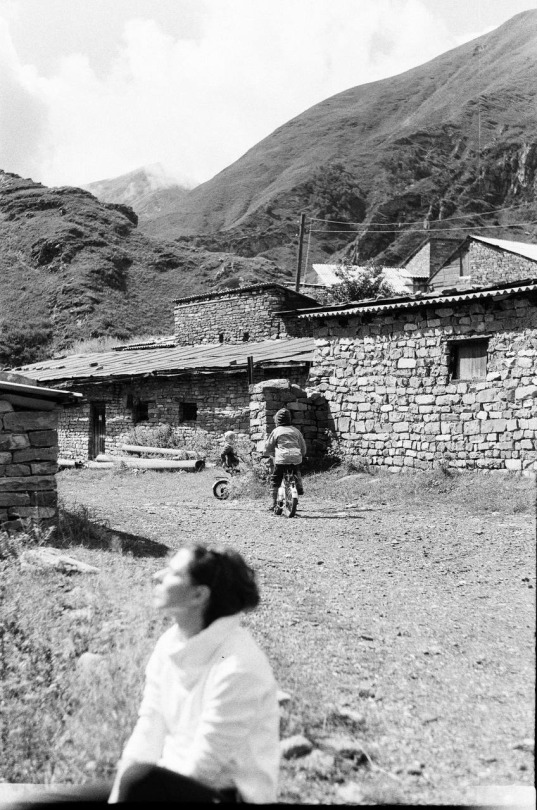
Лезгинское село Гдым, Ахтынский район.
Lezgian village of Gdym, Akhtynskiy district
#dagestan#кавказ#этника#дагестан#tradition#Caucasus#Caucasian#dagestanpeople#ethnographic#national fashion#national costume#dagestan village#village#ethno#ethnic#ethnic costume#caucasia#дагестанские традиции#национальный костюм#национальный#национальный колорит
47 notes
·
View notes
Text
also, a little update on my playlist waiting list. got "a few" playlists in the pipeline, in other words, if you have recs - you know where to find me:
'amis
abaza
ahom
anindilyakwa
anishinaabemowin
assamese
bahasa malaysia
balochi
basaa (cameroon)
bengali
BOSNIAN
BRETON
burmese
CAPE VERDE CRIOULU
CATALÀ
chechen
chishona
comanche
danish
dari
dholuo
ZAPOTEC
galician
guaraní
guinea bissau creole
faroese
gujarati
hebrew
cornish
kabi
khowar
kikuyu
kimbundu
kuna
lakota
laritja
lezgian
low german
macedonian
malayalam
maninka
mapudungun
mari
MONGOLIAN
nahuatl
p'urhépecha
paiwan
réunion creole
qırımtatarca (crimean tatar)
samoan
sarikoli
setswana
somali
songhai
southern min
surzhyk
swedish
(KI)SWAHILI
TAMAZIGHT (STANDARD MOROCCAN)
TAMIL
tao/yami
tatar
telugu
tigrinya
mixtec
twi
tuvan
uyghur
vepsian
wolastoqey
wolof
wubuy
yiddish
yup'ik (central alaskan)
bold+capital letters ≙ almost finished
bold+italic ≙ new ones
21 notes
·
View notes
Text

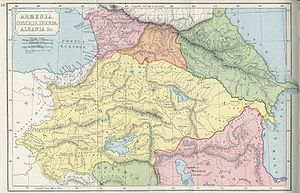



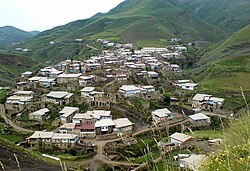
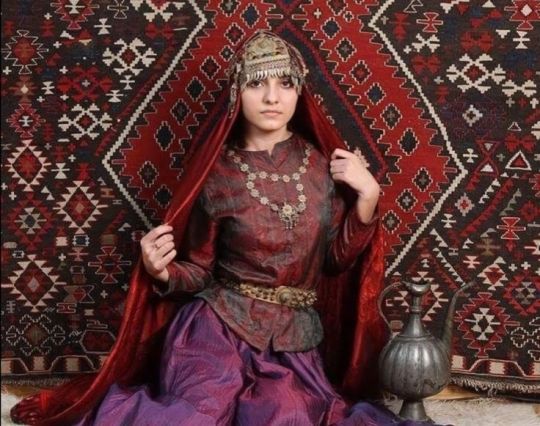
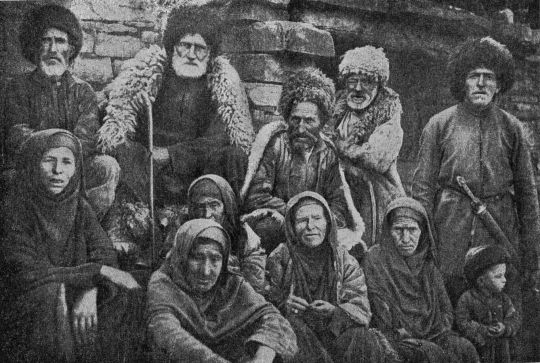
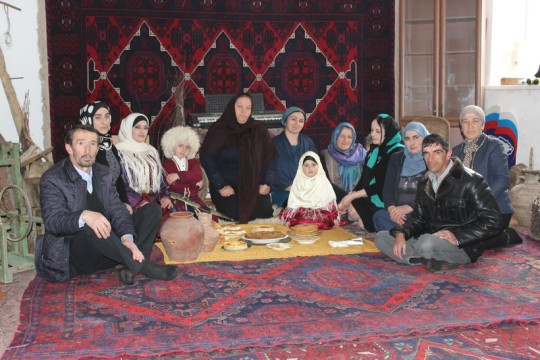
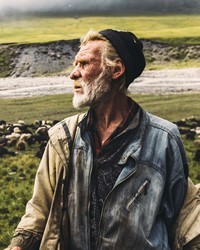
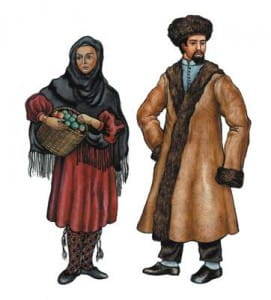
8) Agulowie, Aghuls (Aghul: агулар/agular, Lezgian: Агъулар) - lud w Dagestanie w Rosji. Według spisu z 2010 roku w Rosji było 34 160 Aghulów (7 000 w 1959). Język aghul należy do rodziny języków lezgijskich, grupy rodziny północno-kaukaskiej. Pod względem etnicznym Aghulowie są bliscy Lezginom. Istnieją cztery grupy ludu Aghul, które żyją w czterech różnych wąwozach: Aguldere, Kurakhdere, Khushandere i Khpyukdere. Podobnie jak ich sąsiedzi, Kaitakowie, Aghulowie przeszli na islam dość wcześnie, po podboju arabskim w VIII wieku. Ich ustne tradycje twierdzą, że mają żydowskie pochodzenie.
Niewielki naród kaukaski, zamieszkujący południowo-wschodni Dagestan. Według szacunków na koniec lat dziewięćdziesiątych XX w. liczebność Agulów wynosić miała 15–17 tys. osób (i tak też jest podawana liczba użytkowników języka agulskiego), natomiast podczas przeprowadzonego w 2000 r. na terenie Federacji Rosyjskiej spisu powszechnego, narodowość agulską podało 28,3 tys. osób, z tego w samym Dagestanie 23,3 tys. Agulowie posługują się językiem agulskim, należącym do zespołu samurskiego języków dagestańskich, choć rozpowszechniona jest także znajomość lezgińskiego oraz azerskiego. Wierzący Agulowie wyznają islam sunnicki.
Każda wioska Aghul miała radę wiejską, w której reprezentowany był każdy z trzech lub czterech tukhumów. Na czele rady stał starszy. Ważną rolę w sprawach lokalnych odgrywał także wiejski mułła i kadi. W niektórych przypadkach bogatsi tukhumowie wywarli nieproporcjonalnie silny wpływ na władze wiejskie. Podobnie jak gdzie indziej w Dagestanie, Aghulowie byli podzieleni na tukhum (klany), składające się z dwudziestu do czterdziestu gospodarstw domowych. Każdy tukhum miał własny cmentarz, pastwiska i pola siana, a jego członkowie byli związani obowiązkami wzajemnego wsparcia i obrony. Aghulowie mieli tendencję do praktykowania endogamii w tukhum - małżeństwa z obcymi były bardzo rzadkie. W przeszłości Aghulowie żyli w wielopokoleniowych gospodarstwach rodzinnych, choć niezbyt dużych (średnio od piętnastu do dwudziestu członków). Funkcję wodza pełnił starszy mężczyzna, ojciec lub najstarszy brat, posiadający dość szeroką władzę nad sprawami gospodarstwa domowego i jego członków. W przypadku rozpadu dalszej rodziny siostry – nawet te, które wyszły już za mąż i opuściły dom – otrzymywały część ziemi oraz majątek ruchomy. Każdemu z nich przydzielono połowę części ziemi przyznanej każdemu z braci, co było praktyką niezwykle hojną jak na standardy Dagestanu.
Dwadzieścia jeden wiosek położonych wysoko w południowych górach Dagestanu od tysiącleci jest domem dla ludu Agul. Agulowie przeszli na islam po podboju arabskim w VIII wieku. Większa część Dagestanu jest nierówna, ale skalisty, surowy teren wiosek Agul stanowi jeden z najwyższych poziomów nierówności w tym regionie wschodniego Kaukazu. Ciężko pracujące, zniszczone przez pogodę twarze są normą w wiosce za wioską. Górski styl życia stworzył wytrzymałość, którą należy wysoko cenić. Z drugiej strony, cieplejszych cech, takich jak łaska, przebaczenie i współczucie, zazwyczaj brakuje. Owce Agul i ich pasterze roją się przez tereny nizinne i tymczasowo blokują drogi oraz zatykają małe wioski, zanim przejdą dalej – kierując się dalej w dół lub z powrotem na wysokie wzniesienia Agul. Chociaż mężczyźni Agul są znanymi pasterzami, wielu z nich pracuje także w sezonie zimowym na budowach w ośrodkach miejskich, podczas gdy kobiety z tej rodziny utrzymują domostwa w górskich wioskach podczas długich zimowych miesięcy. Lud Aghul jest całkowicie muzułmański.
0 notes
Text
Languages of the world
Lezgian (лезги чӏал)
Basic facts
Number of native speakers: 633,600
Official language: Dagestan (Russia)
Language of diaspora: Azerbaijan, Germany, Kazakhstan, Kyrgyzstan, Turkmenistan, Turkey, Ukraine, Uzbekistan
Script: Cyrillic, 45 letters
Grammatical cases: 18
Linguistic typology: agglutinative, SOV
Language family: Northeast Caucasian, Lezgic, Samur, Eastern Samur, Lezgi-Aghul-Tabasaran
Number of dialects: 3
History
beginning of the 20th century - Arabic script
1928 - introduction of the Latin alphabet
1938 - replacement by the Cyrllic alphabet
Writing system and pronunciation
These are the letters that make up the alphabet: а б в г гъ гь д е ё ж з и й к къ кь кӏ л м н о п пӏ р с т тӏ у уь ф х хъ хь ц цӏ ч чӏ ш щ ъ ы ь э ю я.
Stress is generally placed on the second syllable.
Grammar
Nouns have no gender, two numbers (singular and plural) and eighteen cases (absolutive, ergative, genitive, dative, adessive, adelative, additective, postessive, postelative, postdirective, subessive, subelative, subdirective, inessive, inelative, superessive, superelative, and superdirective).
Numerals are based on the vigesimal system, similarly to French. Nouns following a number are always in singular.
Verbs are conjugated for tense, mood (indicative, imperative, prohibitive, optative, and hortative), and aspect (imperfective and perfective). Person and number are not taken into account in verb conjugation.
Dialects
There are three dialects, Küre, Axceh, and Quba. They diverge in phonology and morphology.
Standard Lezgian is based on the Küre dialect.
62 notes
·
View notes
Text
So far the best paper I’ve written in college was about the vowel harmony rules of a language spoken by only 100,000 people in the mountains of Uzbekistan
#like okay#u aint gonna find that info on wikipedia#god my phonology textbook was full of the weirdest fucking languages#id never heard of like any of them#why r there so many languages#theres a ceremonial language only spoken by men somewhere in like the aistralia/pacific island regions#but theres only like 200 words and theyre not well documented#anyway the language im talking about is called lezgian
5 notes
·
View notes
Text
This week I've been looking over the comparative phonology of the Lezgic languages of southern Daghestan and partly northern Azerbaijan, going by the data in the Northeast Caucasian Etymological Dictionary of Nikolayev & Starostin (and whose reconstructions I think could probably use fine-tuning downwards; a look at the actual data is already giving me various ideas on that, but more on it later).
One interesting detail that turns up is seemingly contradictory behavior of the pharyngealized uvular consonants:
in Lezgian proper and a few other varieties these trigger vowel fronting; e.g. *qˤːun > /qːyn/ 'shoulder' (cf. Tabasaran and Rutul /ʁˤun/, Budukh /qˤun/); *oχʷˤɨ- > /χy-/ 'to guard' (cf. Tab. /uχˤ-/, Rut. /uχˤa-/. This would suggest that "pharyngealization" in Lezgic is rather "depharyngealization", that is, [+ATR], not [+RTR].
at the same time, in a few varieties these develop into obstruents articulated even further back; e.g. Agul /ʁˤun ~ ʕun/ 'shoulder'; this would suggest the usual sense of pharyngeal constriction, i.e. indeed [+RTR].
sometimes even both seem to overlap, e.g. Agul /qˤʼuj ~ ʡyj/ 'pitchfork', where the latter dialect variant shows both consonant retraction and vowel fronting.
One way out of this conundrum that I can think of is to consider an additional articulator, i.e. the epiglottis — after all that's the epiglottal stop /ʡ/ in my last Aghul example. N & S's transcription notes also actually describe /ʡ ʕ ħ/ as a group of "emphatic laryngeals", while they reserve the name "pharyngeal" for segments in Agul only that they instead mark "R", "X" (this is a very rare contrast; but corroborated also e.g. by the UCLA Phonetics Lab entry for Agul). Perhaps "pharyngealization" is or has been actually just tongue-root-neutral epiglottalization, and it feeds into two separate processes in the daughter languages: epiglottal > ATR (or even just straight up epiglottal > front) versus epiglottal > RTR ("pharyngealized")?
16 notes
·
View notes
Photo
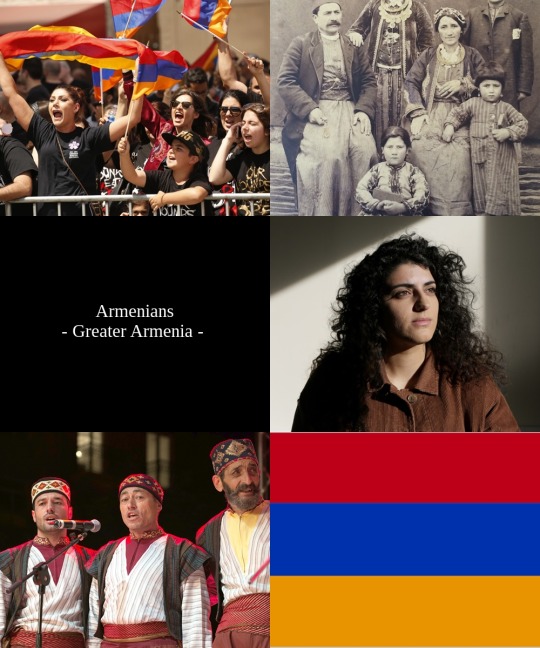

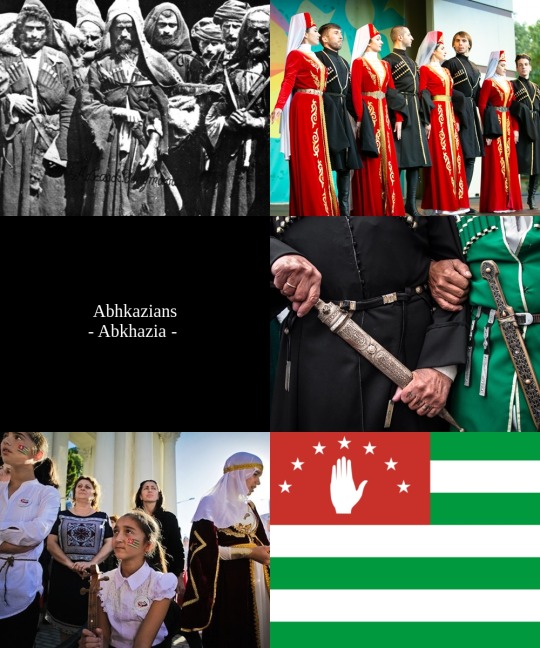
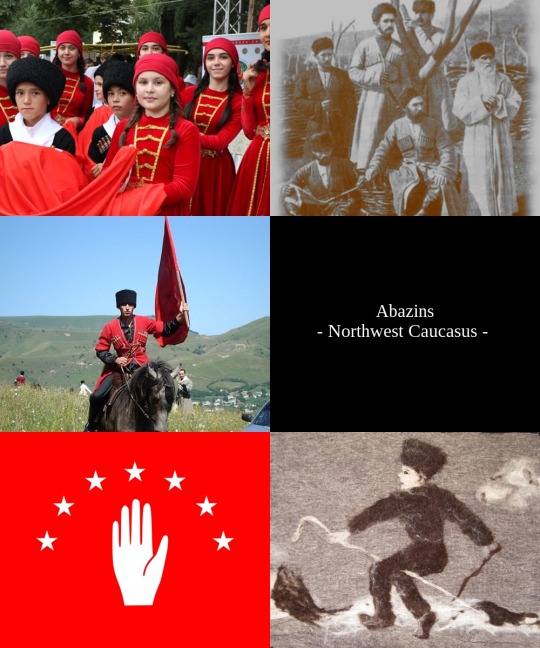


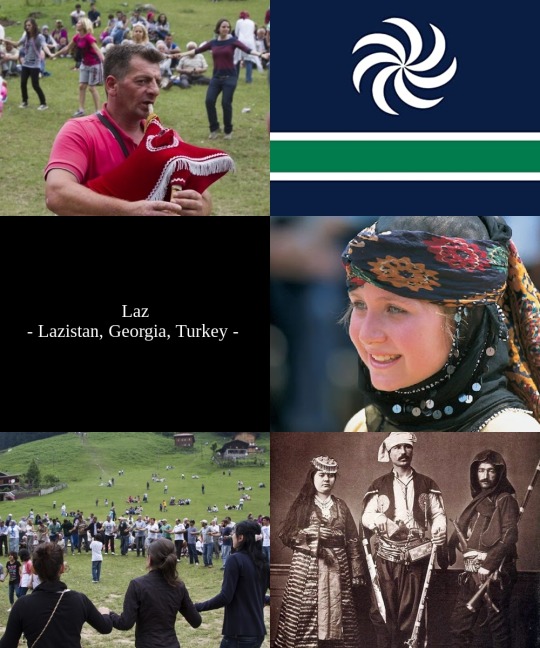
Aesthetic of the ethnies of the world ! Caucasian ethnies part 2 !
The Armenians are a indo-european people inhabitants of the region of Greater Armenia, and the country of Armenia. They speak armenian. They are christian. There are around 6 to 8 millions of them, with 2.9 millions in Armenia, 1 to 2.9 millions in Russia, and 1 million in the United States.
The Georgians are a kartvelian people inhabitants of the country of Georgia. They speak georgian and kartvelian languages. They are Eastern Orthodox christian. There are around 4 millions of them.
The Abkhazians are a northwest caucasian people inhabitants of the region of Abkhazia, officially in Georgia. They speak abkhaz, russian, georgian and turkish. They are Abkhazian eastern orthodox and Sunni muslim. There are 748 000 of them, with 600 000 in Turkey.
The Abazins are a northwest caucasian people inhabitants of the region of Abazinia, officially in Russia. They speak abaza, russian, turkish and arabic. They are Sunni muslim. There are around 150 000 of them.
The Lezgins are a northeast caucasian people inhabitants of the region of Lezgistan, officially in Russia and Azerbaijan. They speak lezgian. They are Sunni muslim. There are 1.2 millions of them.
The Ossetians are a indo-european people inhabitants of the region of South Ossetia and North Ossetia-Alania, officially in Russia. They speak ossetian, russian, georgian. They are Eastern Orthodox christian. There are around 600 000 of them.
The Lazs are a kartvelian people inhabitants of the region of Lazistan, officially in Turkey and Georgia. They speak laz, georgian and turkish. They are Sunni muslim for the Lazs in Turkey, and Georgian Orthodox for the Lazs in Georgia. There are around 150 000 to 1 million of them.
Here it is ! Those aesthetics are part of a serie. We will cover most of the biggest ethnies of the world. Just for fun !
#Ethnies of the world#Aesthetic#geography#moodboard#ethnies#ethnology#armenian#armenians#armenia#georgian#georgians#georgia#abkhazian#abkhazia#abkhazians#abazins#abazin#Abazinia#Ossetians#ossetian#ossetia#lazs#laz#Lazistan#kartvelia#anthropology#asia#europe
23 notes
·
View notes
Photo
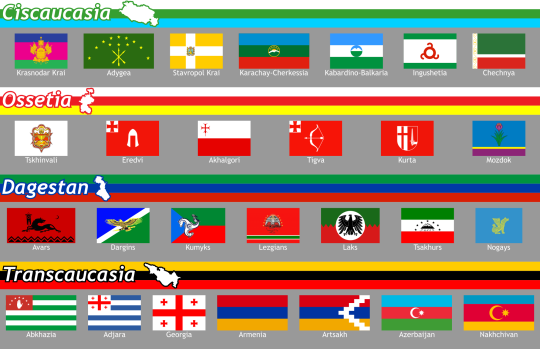
The Caucasus has some pretty cool flags, doesn't it? (Explanations in comments)
from /r/vexillology Top comment: **A few things I wanted to note first:** - It was probably dumb of me to list Ossetia and Dagestan separately from the rest of the Caucasus. Dagestan is very much Ciscaucasian, Ossetia is split between Cis- and Transcaucasia. - The surrogate tricolor used for Ciscaucasia is one which according to an unreliable-looking Italian vex site was used by the MRNC shortly before they adopted their more well-known American-style flag. - The surrogate tricolor used for Transcaucasia is the one used by the short-lived Transcaucasian Democratic Federative Republic. - I've vaguely heard that the names Cis- and Transcaucasia are disliked by Caucasians. If you're Caucasian and the names offend you, then sorry. I just didn't want to use longer names than necessary. - The listing of a flag here doesn't guarantee its official or unofficial use. So, think of these more as *some* flags *for* rather than *the* flags *of*. - Please don't talk about whether or not Abkhazia, South Ossetia, and Artsakh should or shouldn't be recognized. - Abkhazia is sometimes considered part of Ciscaucasia for cultural and linguistic reasons, although it is geographically Transcaucasian. - I used the Georgian name of Akhalgori/Leningor because that's what Wikipedia uses. - There are tons of really cool ethnic and city flags which I didn't list, plus some more Southern Russian flags which may or may not be Ciscaucasian depending on your definition. - There are also tons of really cool emblems and anthems you might want to check out. - Sorry if some of the pictures are a bit low-quality. Now, time to quickly explain these flags. **Please correct any mistakes.** I'm sure there's at least one. **Ciscaucasia:** - Krasnodar Krai's flag is the Kuban People's Republic's defaced with a golden version of the krai's coat of arms. Said coat of arms is heavily based on the one used by Kuban Oblast in Imperial times. - Adygea's flag is the same as the flag of Circassia. Green is nature and Islam, yellow is wheat, nine stars in the arc are the aristocratic tribes of Circassia, three horizontal stars are the democratic tribes, and the three arrows represent unity between the original princely families of Circassia. - Stavropol Krai's flag has a yellow field to represent sunshine and agriculture, and a pure white cross to reference the name (from "Stauropolis", Greek for "City of the Cross"). The cross also represents Stavropol Krai as "crossroads" between Europe and Asia, and Russia and the Caucasus. - Karachay-Cherkessia's flag is unofficially said to have sky blue for Turks, green for Adyghes, and red for Slavs. The central emblem represents the beauty of the Caucasus. - Kabardino-Balkaria's flag features a representation of Mt. Elbrus, which is located there. I think I read somewhere that the blue represents the Turkic Balkars, green the Adyghe Kabardians, and white the peace between them, but I'm not sure where. - Ingushetia's flag has green for Islam, white for purity, and red for the struggle against injustice. I do have to wonder if the colors are related to the Ichkerian flag. In the middle is a traditional solar sign, with three rays for the oneness of past, present, and future. - Chechnya's flag uses the Chechen colors, also found on the Ichkerian flag often used in its place. Green is Islam, red is bloody history, white is peace and the mountains. At the hoist is a traditional ornamental pattern. **Ossetia:** - Tskhinvali's flag shows the city emblem on a white field. This emblem features Ossetian colors, three towers, a sunrise, the name, the key to the city, the Nartamonga bowl from Ossetian mythology, and an Aryan symbol of harmony and perpetual motion with a 12-string harp. - Eredvi, Akhalgori, Tigva, and Kurta's flags are similar to their respective coats of arms. The flags and arms were designed by heraldists of the Georgian government, using patriotic Georgian motifs. I couldn't find any further information. Interestingly, Eredvi and Kurta are abandoned. - Mozdok is the only city in North Ossetia with a flag of its own. It's based on the coat of arms, itself based on the Imperial-era arms, with additional stripes at the bottom. I couldn't find the significance of the saffron flower. **Dagestan:** - This Avar flag features stylized mountains, a Hunnic wolf, a crescent moon, and a banner with an ancient Avar swastika symbol. This is based on the symbol of the historical Avarian Khanate. Variants change the colors or drop the mountains. - This Dargin flag is officially the flag of Dakhadayevsky Raion, where many Dargins live. The eagle with a traditional Caucasian dagger represents the Caucasian man, master of the mountains, striving upwards towards wisdom and spiritual perfection. - This Kumyk flag has blue, green, and a star and crescent for Turkic heritage and Islam, and red for the "national self-image". The triskele represents the eternal cycle of being in Tengrism. The horse is the Kumyk's eternal companion, the wolf represents freedom, and Umai-Ana is the ancestress and patroness of the Kumyks. - Lezgians use many similar flags. Sometimes it's simple stripes, sometimes it has "ALPAN" (Lezgian for "Caucasian Albania") written in Caucasian Albanian letters, sometimes an emblem with an eagle and stars, sometimes both, sometimes other variations still. Red is bloody history, white is peace, green is Islam. - This Lak flag has a stylized mountain range and a picture of an eagle. I can only imagine the meaning is similar to those in other flags with similar elements. - This Tsakhur flag depicts the mountains, with seven stars for the seven countries Tsakhurs have been under throughout history. "TSAKHUR" is written in Caucasian Albanian letters. Green is Islam, white is Tsakhur scientists, and red represents a bloody history. - This Nogay/Nogai flag has a winged she-wolf to represent the Ashina tribe, the ancient leaders of the Turks. The colors presumably also represent Nogays' Turkic heritage. **Transcaucasia:** - The flag of Abkhazia combines elements of the flag of the MRNC, of which it was part, and the flag of "Sevastopol" in the Book of All Kingdoms, which is believed to have represented what is now known as Sukhumi. The stars represent the historical regions of Abkhazia, and the stripes represent the peaceful co-existence of Christianity and Islam. 7 is a sacred number to the Abkhaz. - Adjara's flag depicts the national flag of Georgia, with blue for the Black Sea. The seven stripes presumably represent the two cities and five districts of Adjara. - Georgia's flag originated in the Middle Ages and was adopted in 2004. It features St. George's Cross and four Georgian Bolnisi crosses. One explanation of the meaning is that it represents the Five Holy Wounds. - The flag of Armenia was based on a flag of the Lusignan Dynasty, but with the charges removed and yellow swapped for orange. Among other things, the red represents the Armenian Highland, blue the will to live under peaceful skies, and orange creativity and good work ethic. - The flag of Artsakh is an Armenian flag defaced by a zig-zag pattern used in local carpet designs. This defacement also creates the image of a smaller Armenian flag separated from the rest. - The flag of Azerbaijan has sky blue for Turkic heritage, red for modernity, and green for Islam. The star and crescent is also a symbol associated with Islam and Turks. The eight points may represent the letters of "Azerbaijan" when written in Arabic, or the different Turkic peoples of Azerbaijan. - This flag of Nakhchivan was never official. It was reported in protests in the '90s, although in reality it was just a variant of the national flag. Nevertheless, it's still occasionally used to represent Nakhchivan.
23 notes
·
View notes
Photo

Я, конечно, девушка современная, но при случае никогда не откажусь облачиться в национальный костюм. 😌👘 ⠀ Безумно люблю традиционные наряды всех народов. 💜 ⠀ Так, я уже примеряла балхарский и кубачинский костюмы. ⠀ В этот раз мне посчастливилось сняться в этно-фотосессии, организованной наикрутейшим @amishami 📷📷📷 ⠀ ⠀ ✨✨✨Сколько было счастья, когда я узнала, что в @saklya_pki нашелся даже мой родной лезгинский костюм. 😍💟 ⠀ ✨✨✨Спасибо @fati_dobro за предоставленную возможность прикоснуться к истории. Отдельная благодарность волшебницам, воссоздающим из старинных тканей такую красоту! _______ Про национальные костюмы я знаю чуточку больше, чем многие. 😌 А особая моя страсть- платки! ⠀ Не припоминаю ни единого случая, чтобы даже в сильную стужу появилась на улице в шапке. Меня сильно пытались приучить к шапкам осенью и зимой, но моей любви к платкам никто не отнимет. )) ⠀ ✨✨✨ ⠀ 🔶На мне, кстати, традиционный лезгинский платок-келегъа с каймой. Такие платки обычно передаются из поколения в поколение. Даже мне перепал от бабушки. ) ⠀ ⠀ 🔵 Как правило, их делали из струящегося шелка или кисеи. В Ахтынском районе носили келегъа преимущественно белого цвета. ⠀ 🔴 Обязательный атрибут головного убора лезгинки-чохто (шуткьу). Он представляет собой чепец с накосником, либо мешкообразный убор с лентами. Часто присутствует подбородочная лямка (не в данном случае). ⠀ 🔵Его часто украшали монетками. ⠀ 🔴Шуткьу носили под платком для того, чтобы волосы не попадали в пищу во время готовки 🍜, а так же, чтобы они не мешали во время работы по хозяйству. ⠀ ✨✨✨ ⠀ Да, и в целом, считалось, что спрятанные под головным убором волосы защищали их обладательцу от сглаза. ⠀ А Вы любите носить платки?🌼🌹🌸💖 ⠀ _______ ⠀ Фото: @amishami-спасибо, ты вдохновляешь! 💖 ⠀ Локация: @saklya_pki 💜 ⠀ Костюм: @fati_dobro 💖
#dagestan#caucasian#caucasus#дагестан#сакля#лезгинка#лезгияр#лезгирушик#лезгируш#лезгины#lezgian#lezgians#ethno#ethnic#photo#Кавказ#этно#этнос#этника#этнический#национальныйкостюм#nationalcostume#tradition#традиция#традиции#горянка#лезгинскийкостюм#келегъа#платок#кувшин
20 notes
·
View notes
Photo

Pronounciation of the letter <Xx> either in Latin or Cyrillic alphabets,
because they’re homographs and have the same origin. (Transliteration systems are not included, and only when the official alphabet has <X> or does it occur in native words did I include the languages in the map).
[ks] - Spanish, German, Norwegian, Swedish, Dutch, Danish, Finnish, Polish, Romanian [ks, gz, z] - English, French [ʃ] - Galician, Basque, Catalan, Maltese, Nahuatl, Otomí, Mayan Languages [ʃ, s, z, ks, gz] - Portuguese ([ʃ] is the more common) [z] - Venetian [s] - Vietnamese, French [x] - Russian, Belarussian, Ukranian, Bulgarian, Macedonian, Serbian, Kurdish, Kazakh, Uzbekh, Kyrgyz, Tajik, Mongolian, Buryat, Evenki, Khanty, Mansi, Mari, Erdzya, Tatar, Udumurt, Komi, Chuvash, Bashkort, Altai, Tuvan, Khakass, Yakut, Azeri, Caucasian Languages, Kalmyk, Chechen, Ingush, Adyghe, Lezgian, Apache, Wolof, etc. [ʒ] - Sardinian (Campidanese) [ħ] - Somali [dz] - Albanian [ǁ] for Zulu, Xhosa, Swazi, Ndebele,
As other: [ʔ] for Pirahã, [ɗ] for Afar, [tʼ] for Oromo
441 notes
·
View notes
Text
Udi
Endangered Languages Challenge 2/7
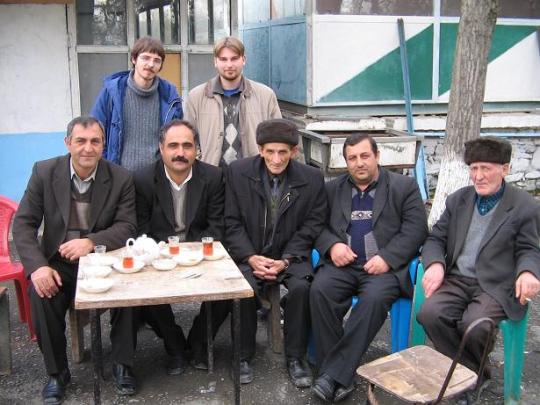
What’s the language called?
Udi, удин муз, Udin muz
What linguistic family does it belong to?
Udi is a Lezgic language, and it’s related to Lezgian, Aghul, Kryts, Tabasaran, Budukh, Rutul, and Tsakhur.
Where is it spoken?
In Azerbaijan, it’s spoken in Qabala rayon (specifically in a town called Nij) and in Oghuz rayon, and speakers are also found in North Caucasus in Russia. It is also spoken by ethnic Udis living in the villages of Debetavan, Bagratashen, Ptghavan, and Haghtanak in Armenia and in Zinobiani in Georgia.
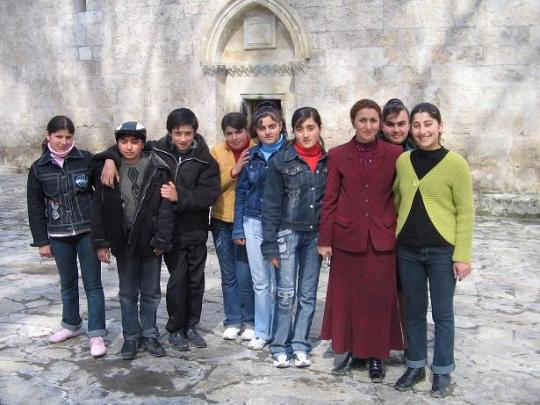
What’s the situation for the community of speakers?
There are estimated to be about 10,000 Udi people, but fewer speakers of the language. UNESCO classifies the Udi language as “severely endangered”.
Udi people live in various places in Azerbaijan, Russia, Armenia, Georgia, and elsewhere, but there are few concentrated communities of Udi speakers, which poses a challenge for transmission of the language.
The sociolinguistic situation is further complicated by strife between Armenia and Azerbaijan; the countries went to war in the late 80s, and many Udis either fled or were forced out of the regions where they had been living previously. In some cases, they ended up bolstering the Udi-speaking populations in other areas, but many others ended up in diaspora.
In predominantly-Udi town of Nij in Azerbaijan, the language is taught to children in elementary schools since the 90s and there are books available in the language (at least, according to one source; others I found indicate otherwise.) However, Udi children living elsewhere are educated in the majority languages of whatever region they happen to live. The younger the Udi person, the less likely they are to speak the language.
In the town of Zinobiani in Georgia, one of the schools houses a museum dedicated to the Udi language.
Udi is still the language of daily life for many in the community, but for official or employment purposes, many must be bi- or multilingual in a majority language such as Azeri, Russian, Armenian, or Georgian.
In Nij at least, at least one study indicates that speakers view their language positively: “Over two-thirds of respondents indicated they use Udi in the work-place. Udi is the language of the home and the village. Respondents unanimously said that mothers should speak Udi to their children and that children should learn Udi before Russian or Azerbaijani.”
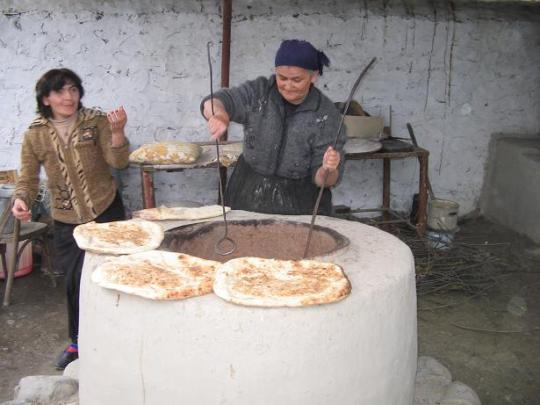
Does it have any official or legal status?
It’s not an official language of any of the countries in which it’s spoken. Azerbaijan recognizes and has taken some interest in maintaining/protecting Udi culture because of its role in the country’s history, and educational and language-learning materials have been created for the Udi language.
Sources and resources:
A team from the Russian Academy of Science documented their trips to Udi villages - (Russian Language, but there are lots of pictures) Articles on Udi, available for download - (Russian language) Udi people - Wikipedia Udi language - Wikipedia Udi language - Omniglot Caucauscapades - A team documents their trip to the Georgian Udi village of Zinobiani Svan/Udi/Sova-Tush - http://dobes.mpi.nl/projects/svan/language/ -DOBES Towards a History of Udi - Wolfgang Schulze Colonialism, nationalism and language vitality in Azerbaijan
#udi#удин муз#endangered-languages#endangeredlanguageschallenge#this was one of my favourites to learn about
45 notes
·
View notes
Text
you know what fuck "lebanese" as the funny go-to mixup word for "lesbian". you know who hasn't been involved in this inane wordplay who totally deserves to be?

LEZGINS
(their language is called "lezgian")
3 notes
·
View notes
Text
There's enough kiwi days to go for everyone! here's a few more just off of Wiktionary:
Monday: Quechua killachaw Tuesday: Hungarian kedd, Oromo Kibxata Wednesday: Chechen kxaara, Estonian kolmapäev Thursday: Indonesian Kamis, Malay Khamis, Oromo kamsa, Somali khamiis (all of these from Arabic al-khamīs) Saturday: Amharic ḳədame, Lezgian kiš Sunday: Armenian kiraki, Chechen k'irande, Ewe Kɔsiɖagbe, Greek Kyriaki, Romani kurko
and a special shout out for Kinyarwanda whose days of the week seem to be (M–S) Kwambere, Kwakabiri, Kwagatatu, Kwakane, Kwagatanu, Kwagatandatu & Kwamungu
26K notes
·
View notes
Text
Writing systems
Cyrillic (Кириллица)
The Cyrillic script is in honor of Saint Cyril, a Byzantine missionary who, along with his brother, Saint Methodius, created the Glagolitic alphabet in 863. Modern Cyrillic alphabets are descended from the Early Cyrillic script, which was created by two of their disciples in the 9th century in the First Bulgarian Empire during the reign of Tsar Simeon I the Great.
The Early Cyrillic script was based on the Greek uncial script, with ligatures and additional letters from the Glagolitic script for sounds not used in Greek.
Notable features
Script type: alphabet
Writing direction: left-to-right in horizontal lines
Number of characters: 29 common letters (22 consonants + 7 vowels). Most languages use more letters, which may be additional letters (26 possible letters) or ligatures (19).
Languages: Abaza, Abkhaz, Adyghe, Aghul, Akhvakh, Altai, Alyutor, Andi, Archi, Avar, Azerbaijani, Bagvalal, Balkar, Bashkir, Belarusian, Bezhta, Botlikh, Bulgarian, Buryat, Central Siberian Yupik, Chamalal, Chechen, Chelkan, Chukchi, Chuvash, Crimean Tatar, Dargwa, Dolgan, Dungan, Enets, Erzya, Even, Evenki, Gagauz, Godoberi, Hinukh, Hunzib, Ingush, Interslavic, Itelmen, Judeo-Tat, Kabardian, Kalmyk, Karaim, Karakalpak, Karata, Kazakh, Ket, Khakas, Khanty, Khinalug, Khwarshi, Kildin Sámi, Komi, Koryak, Krymchak, Kubachi, Kumyk, Kurdish, Kyrgyz, Lak, Lezgian, Macedonian, Mansi, Mari, Moksha, Moldovan, Mongolian, Montenegrin, Nanai, Nenets, Nganasan, Nivkh, Nogai, Old Church Slavonic, Ossetian, Pontic Greek, Russian, Rutul, Selkup, Serbian, Shor, Shughni, Soyot, Tabasaran, Tajik, Talysh, Tat, Tatar, Tindi, Tofa, Tsakhur, Tsez, Turkmen, Tuvan, Udege, Udi, Udmurt, Uilta, Ukrainian, Ulch, Urum, Uyghur, Uzbek, Votic, Wakhi, Yaghnobi, Yakut, Yazghulami, and Yukaghir (110)
The cursive handwritten forms of many letters are very different from their upright forms.
Iotation—a form of palatalization that occurs when a consonant comes into contact with a vowel preceded by /j/—was indicated by ligatures formed with the letter і: ꙗ, ѥ, ю (ligature of і and оу), ѩ, and ѭ. Ы is the ligature of ъ and і.
Modern Cyrillic alphabet

Non-Slavic letters

#langblr#lingblr#abaza#abkhaz#adyghe#avar#azerbaijani#belarusian#bulgarian#chechen#chuvash#crimean tatar#gagauz#ingush#kabardian#karaim#kazakh#kurdish#kyrgyz#mongolian#montenegrin#ossetian#russian#serbian#tajik#tatar#turkmen#udmurt#ukrainian#uzbek
82 notes
·
View notes
Text
Okay all I have to do today is type up a personal statement and a few other things for an application and then make a handout for the phonological rules of lezgian and then I can do whatever I want
#and by whatever i want i mean.......watching more mp100 amvs#btw do yall want me to.....reblog any of them 👀#i just need one person to enable me and i will#okay time to eat brunch and GOOOOO#maddie’s misadventures
4 notes
·
View notes